Before we go any further, it’s best to explain the difference between ervasherbs and especiariasspices . Simply put, herbs are leaves while spices are seeds, bark, roots, and flowers. If you love food like we do, or want to understand the menu at a Portuguese restaurant, we think you’ll enjoy this guide to vocabulary for herbs and spices in Portuguese cooking. Thanks to Relish Portugal magazine for suggesting this great idea!
Depending on the type of herb, you can buy them in many different forms:
Fresh herbs often have better flavour, but dried alternatives are more practical for people who don’t cook often. They’re also easier to find at the grocery store, whereas certain fresh herbs can only be found at a farmers’ market. Many Portuguese people like to use their little backyards or gardens to grow fresh herbs.
Spices are always dry and come either whole or ground into a powder. You can buy them in little frascosjars , saquetaspackets , or sometimes a granelin bulk – which is the cheaper option.
Typical herbs
They may not be in every kitchen, but these herbs are among the most common in Portuguese food.
Louro (Bay leaf)
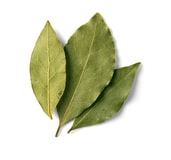
Probably the most used herb in all of Portuguese cuisine, lourobay(leaf) comes from a tree called the loureirobay laurel . Louro is typically used whole and dry, and you can find it in all types of meat marinades andrefogadossautées . Adding bay leaf is a good way of cutting the amount of salt in a recipe while giving it a distinct flavour.
Coentros (Cilantro) & Salsa (Parsley)
CoentrosCilantro, coriander and salsaparsley are two similar looking herbs with a different taste and smell. Both have a citric, bitter flavour, with cilantro being much stronger, which may be why some people don’t like it. Salsa mainly appears in northern Portuguese recipes, while coentros is a staple of many southern dishes. Dried or frozen options exist, but they taste better fresh.
Salsa is usually one of the last things to add to a Portuguese dish, since cooking it diminishes the flavour. It’s so popular that, when paying for vegetables or fruits at merceariasgrocery stores and mini-mercadosmini-markets , it’s not unusual for people to ask for complimentary branches of parsley. Usually, the only fish it is combined with is bacalhaucodfish , in several recipes.
Coentros is often a main ingredient in soups and sauces and it pairs nicely with fish and clams. Coentros are also one of the ingredients in the popular dish Açorda à Alentejana . This dish consists mainly of bread and originates in the Alentejo region, but is now present in restaurants and homes all over the country.
Alecrim (Rosemary)
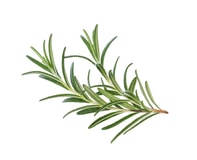
When seasoning meat and/or making roasts, a great replacement for louro is alecrimrosemary as it also goes well with potatoes.
One common mistake people make is calling rosemary “rosmaninho” – which is in fact another name for alfazemalavender , and not alecrim.
Hortelã (Mint)
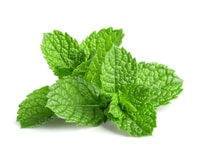
In the center and north of Portugal, hortelãmint is used instead of coentros as one of the ingredients of Açorda . It’s also a popular garnish forcanjachicken soup .
Carqueja (Genista tridentata)
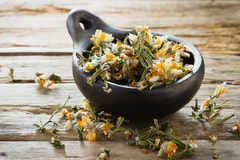
Carqueja is plant native to the center and north of Portugal. Its dry flowers are used to make Arroz de Carqueja and season game meat, mainly o coelhorabbit .
Other herbs
- o tomilhothyme – Cultivated in Portugal and known for its medicinal properties, goes well with meat and fish dishes
- oregãosoregano – An herb strongly associated with Mediterranean cuisine, especially Italian, Portuguese folks like to use it as seasoning in tomato and cucumber salads
- manjericãobasil – One of the most popular herbs worldwide, goes well with tomatoes, pastas and many other foods
- cebolinhochives – Not very present in Portuguese recipes but is a great addition to sauces, cheeses, and omelets
- estragãotarragon – Not a popular herb, but one that’s good for making sauces and seasoning white meats
Spices
When talking about the Descobrimentos PortuguesesPortuguese discoveries, Age of Exploration , one is always bound to mention the spice routes and how valuable they were. While their worth was once on par with gold, today they are relatively cheap and always present in our cupboards.
Pimenta (Pepper)
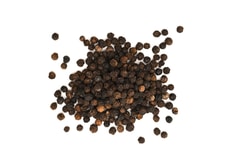
The most basic pair of seasonings one can use when cooking is salsalt andpimentapepper . There are various types of pepper but the two most used in Portugal are pimenta pretablack pepper and pimenta brancawhite pepper . White pepper is a bit spicier than the black variant, which has a more rich and complex taste.
Piri-piri
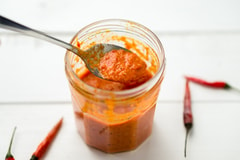
Piri-piri is a very hot variant of the chili pepper that’s very common throughout Portuguese-speaking countries, and was originally cultivated in Mozambique. It is a very small pepper that can be cut to add to marinades or used as a condiment. Supermarkets often carry piri-piri infused olive oil or you can make your own, as restaurants and ‘snack-bars’ usually do.
Colorau (Paprika)
ColorauPaprika , also known as pimentão-docepaprika, literally: sweet-pepper , is a very popular spice in Portugal. It’s a popular addition to meat marinades and roasts, and is traditionally used when making Portuguese chouriçaschorizos . It’s also present in the production of certain cheese varieties, giving them a distinct flavour and colour.
Canela (Cinnamon)

CanelaCinnamon is mainly found in Portuguese desserts and other sweet dishes, usually as a topping. Although not necessary, when eating the famous pastéis de nata, many recommend sprinkling cinnamon powder on top first.
Erva-doce (Anise seed)
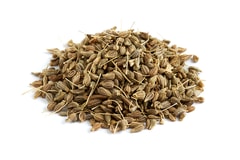
Erva-doceanise is often confused with funchofennel as they have a very similar appearance and a sweet, licorice-like taste and aroma. “Sweet-grass” is the literal translation of erva-doce, but the seeds are actually the part of the plant we use. Whole or ground, they’re used in many desserts and Portuguese pastries as well as seasoning for castanhas cozidasboiled chestnuts .
Cominhos (Cumin)
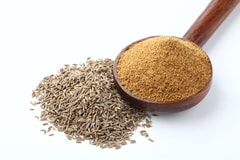
Another popular spice in Portuguese cooking, cominhoscumin is used in morcelasblood sausage and other traditional sausages.
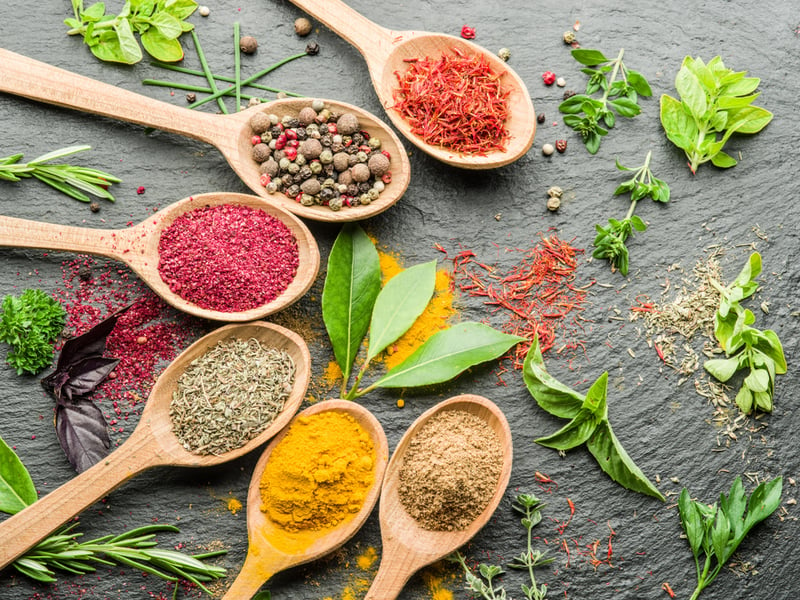
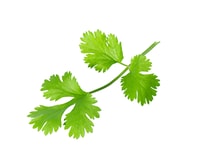
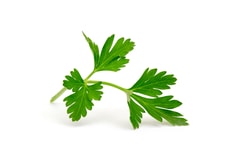



As the cook in my household, I found the above very useful because I also do the grocery shopping and (not YET very fluent in Portuguese) and get confused about the various fresh herbs on display.
Just to clarify, carqueja is not native to Europe. The Portuguese and Spanish brought to the Iberian peninsula several hundred years ago, where it’s thrived, but is otherwise an invasive species. It’s native to Argentina, brazil, bolivia, and most of the rest of South America.
I looked it up on Portuguese wikipedia. There are two plants with the same name. You are talking about this one https://pt.wikipedia.org/wiki/Baccharis_trimera and they are talking about this one https://pt.wikipedia.org/wiki/Genista_tridentata
Like David, above, I’m both shopper and cook in my household, too. My normal spice rack holds at least fifty herbs and spices, often more. Does anyone know of a good mail order resource where I can buy spices without doubling their cost through VAT and Duty?
Thanks
Nice listing…adds colour to the site and helps to make Portueguese culture seem more familiar. I hadn’t realised that Piri-piri refers to a specific type of chilli plant.
Its a good lesson, thank you.
Lot of similarity between Indian and Portuguese spices from 14th century.
Namaste and Love from India.
I enjoyed the site. I am of portugese descent but was never taught the language
I’m looking for the English word for the portugese herb marçela that which has little yellow balls on a stem used for making tea when one feels ill
I believe you mean the herb marcela or macela or even macela-do-campo. I’ve never heard of it before, so I did some research and since it only grows in South America, it doesn’t have an english word for it. It’s universally known as marcela or macela. The species name is Achyrocline satureioides !
Helichrysum italicum – curry plant is what you’re looking for i think..
Hey Roy,
I believe you are referring to chamomile tea. It can be in little yellow balls if purchased less refined or less processed . If purchased in a tea box in a grocery store it will be more ground up and not look the same. But it will taste the same.
Link for more info:
https://esmeraldasherbgarden.wordpress.com/2018/07/27/macela-the-madeiran-favorite-chamomile/
It’s grown on the island of madeira as well and sold on the streets of funchal by mostly elderly ladies ,traditionally the little fluffy yellow balls are boiled in a pot in amounts of odd numbers 3,5,7,or 9 according to the level of discomfort.
Hortelã as well as all the other spices are used in the Açores as well. Not to mention the cooking in festas throughout the U.S.
What is cloves and star anise called in Brazil ? My sister is in Brazilia is it possible to find these spices there ?
If available over there (it’s best for your sister to check this in person), they’ll be called cravo-da-Índia (cloves) and anis estrelado (star anise).
I have an aunt who is looking for a herb called Fruncho. I believe that is the closest spelling as my mother in law and her sister dont know how it is spelled. would you know what the herb is in English?
Olá! The Portuguese name is funcho -> fennel in English 🙂
Hello, what herb is „ervas principe“ please?
Olá Susan, “erva príncipe” is lemongrass in English 🙂
Thank you 🙂
Adorei este post! Os temperos realmente fazem toda a diferença na culinária portuguesa. Fiquei curioso para experimentar algumas receitas com ervas frescas. Obrigado por compartilhar!